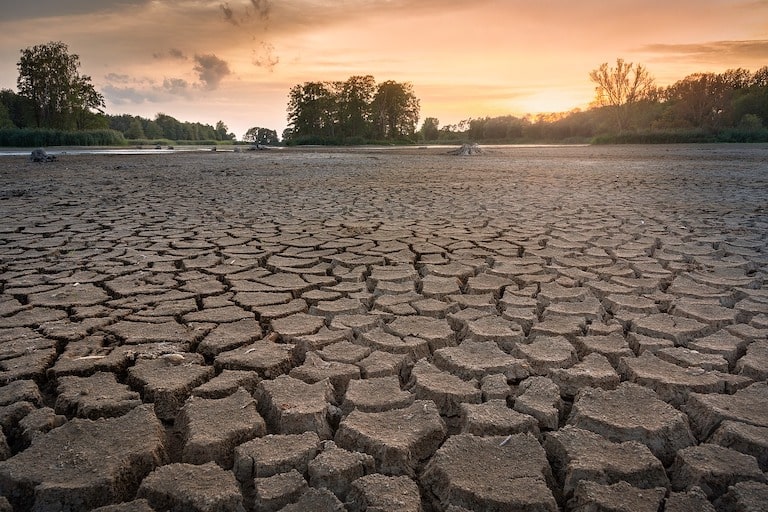Water scarcity has evolved into a critical global concern, casting its shadow over numerous regions worldwide. A convergence of factors, including rapid population growth, escalating urbanization, unchecked industrialization, the looming spectre of climate change, and ineffective water management practices, has coalesced to give rise to the widespread spectre of water scarcity. The ramifications of this crisis are profound, stretching across society and the environment, necessitating immediate attention and comprehensive solutions.
In light of data unveiled from the World Resources Institute’s Aqueduct Water Risk Atlas, a dire water emergency has taken centre stage on the world’s agenda. A staggering 25 nations, representing a quarter of the planet’s population, find themselves entangled in the web of exceptionally heightened annual water stress. On a global scale, a staggering 4 billion people, constituting an astounding 50% of the world’s inhabitants, endure water stress for at least one month per year. Projections indicate that this worrisome figure could balloon to encompass nearly 60% of the global population by the year 2050.
The Economic Ramifications of Water Scarcity
A sombre economic forecast accompanies these statistics. The report posits that a staggering $70 trillion in GDP, equating to 31% of the world’s total GDP, will be exposed to severe water stress by the year 2050. This forecast stands in stark contrast to the $15 trillion (24% of global GDP) exposure recorded in 2010. Poignantly, the lion’s share of this economic vulnerability will rest upon the shoulders of just four nations: India, Mexico, Egypt, and Turkey, which collectively will account for over half of the exposed GDP in 2050, as per the quadrennial report’s projections.
Delving deeper into the report’s findings, it becomes apparent that the repercussions of water scarcity are far from uniform across the globe. A notable 25 nations, harbouring a significant portion of the world’s population, grapple with the harsh reality of acute water stress on a yearly basis. Among this group, nations like Bahrain, Cyprus, Kuwait, Lebanon, and Oman bear the brunt of the crisis, facing vulnerability even during brief drought spells. This underscores the urgency of devising adaptable and resilient water management strategies to avert potential disasters.
Unsurprisingly, the regions that find themselves at the epicentre of this water scarcity crisis are primarily concentrated in the Middle East and North Africa, where a staggering 83% of the population contends with the burdens of extremely high water stress. Moreover, in South Asia, a substantial 74% of the population shares a similar fate. The magnitude of this challenge is encapsulated in the words of Samantha Kuzma, Aqueduct data lead from WRI’s water program and one of the report’s authors, who laments, “Water is arguably our most important resource on the planet, and yet we’re not managing it in a way that reflects that. I’ve been working in water for close to 10 years, and unfortunately, the story has been the same almost the entire 10 years.”
Call for Action
As the crisis deepens, the need for swift and decisive action becomes more pronounced. Viable and economically feasible solutions lie within reach, awaiting implementation. However, the linchpin lies in the commitment demonstrated by political leaders and the strategic allocation of financial resources. The imperative of marshalling these forces cannot be overstated, for they hold the key to steering the world away from the precipice of an impending water catastrophe.
In the face of such a multifaceted crisis, a comprehensive approach is non-negotiable. First and foremost, sustainable water management practices need to be integrated into the fabric of policies and regulations at both national and international levels. This encompasses everything from responsible water use in agriculture and industry to proactive leak detection and efficient distribution systems.
In parallel, investing in water infrastructure is pivotal. Retrofitting existing systems for greater efficiency, developing new infrastructure that capitalizes on technological advancements, and prioritizing water recycling and desalination initiatives can all contribute to alleviating the strain on existing water resources.
Furthermore, public awareness campaigns and educational initiatives are crucial components of the solution. Communities must be empowered with knowledge about responsible water use and conservation practices. These initiatives can be particularly effective in urban areas where large populations can make a tangible impact on water demand through conscious behavioural changes.
Equally important is international collaboration. The interconnectedness of water resources transcends borders, necessitating collective efforts to address shared challenges. Collaborative research, resource-sharing, and technology transfer can facilitate a more harmonized approach to managing and conserving water resources on a global scale.
In conclusion, the spectre of water scarcity casts a long shadow over the world’s future. The complex interplay of population dynamics, urban expansion, industrial growth, climate volatility, and mismanagement has led us to a critical juncture. However, this crisis is not insurmountable. By prioritizing sustainable practices, investing in innovative solutions, fostering public awareness, and embracing international cooperation, humanity can rewrite the narrative of water scarcity into one of resilience and security. The time to act is now, for the legacy we leave for generations to come hinges on the choices we make in the face of this defining challenge.


